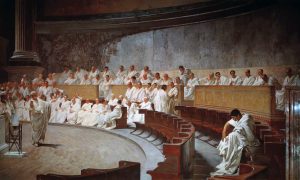If you’re from South Texas or Mexico, it’s very likely that you have at least a small bit of knowledge as to what Mexican Folk Dancing is: the art of dancing in beautifully colored dresses, telling their own story through their dance movements. Mexican Folkloric Dancing is very important in Mexico as it is one of the many ways that the people of Mexico celebrate their culture, independence, and ancestors.
The Mexican Hat Dance is one of the most popular Mexican Folk dances in Mexico. Originating from the state of Jalisco, the Mexican Hat Dance became one of the most popular dances in Mexico and soon made its way to South Texas. Jalisco is not only home to the Mexican Hat Dance, but it is also home to mariachi bands, the China Poblana female and Charro male costumes, and other Jarabe dance forms.1

The Mexican Hat Dance is usually performed by a couple (a man and a woman), where the dancers do not touch each other, but show the courtship between the each other.2 The Mexican Hat Dance, also known as “el Jarabe,” is a dance of flirtation. In the beginning of the dance, the woman is shy and timid, while the man is attentive and persistent. In most versions, the man tosses his sombrero on the floor so that he and the woman can dance around it.3 Most people from Guadalajara (a city in Jalisco) call the Mexican Hat Dance “el Jarabe Tapatio.” Jarabe means a specific mestizo song and dance form, and Tapatío is a term that is used to refer to the people of Guadalajara.4 This is why dancing is such an important art in Mexico. Although there are many forms of el Jarabe (The Mexican Hat Dance), el Jarabe Tapatio is the most important to the people of Jalisco–especially the people of Guadalajara. El Jarabe Tapatio gives a name to the people of Guadalajara and it lets everyone who performs their dance know that they are performing the dance of Guadalajara.
In the early 1900s, Anna Pavlova—a great Russian Ballerina—made the Mexican Hat Dance part of her repertoire and the Mexican Hat Dance became the “National Folk Dance” of Mexico.5 When Anna Pavlova fell in love with the dance and made it part of her repertoire in 1919, the ecstatic Mexican cultural authorities felt that it was an honor and that it could only mean that the Mexican Hat Dance was indeed the most important dance in Mexico. Thus it was decided, since it was such an important dance, that it should be danced wearing the “China Poblana” outfit. The outfit is a beautiful green, wide brimmed skirt with colorful sequence and a coordinating white blouse.6

The Jarabe Tapatío, or the Mexican Hat Dance, is a Mexican folk art that signifies the Mexican identity. Not only does it commemorate a sense of unity throughout the country of Mexico, it also showcases the traditions and culture of Mexico.7 Since its popularity came about during the Mexican Revolution, it brings a sense of cultural identity to the Mexican people: being able to showcase who they are and what they love through the beautiful art of dancing. Dancing in Mexico is a very important part of their culture as they use it to express themselves and to showcase who they are. The beauty and vividness of the dresses and the grace of the dancing are what have captivates audiences around the world.
Today, Mexican Folkloric dances are seen all throughout Mexico and all throughout South Texas. From festivals to basic social gatherings and even in dance competitions; not only is the Mexican Hat Dance seen, but many other forms of Mexican Folk dances are seen all throughout. Even in places like Fiesta, the ten-day long celebration that takes place in downtown San Antonio, citizens see Mexican Folkloric dancing take place all throughout the Fiesta celebration. The Mexican Hat Dance is not just a dance to the people of Mexico, rather, it is a way of showcasing to the rest of the world who the people of Mexico really are.
- Anthony Shay, Choreographic Politics: State Folk Dance Companies, Representation and Power (Middletown, CT: Wesleyan University Press, 2002), 40-41. ↵
- Jose Luis Ovalle, “The Mexican Hat Dance: National Folk Dance of Mexico,” Mexican Dance Company, 2007, http://mexicandancecompany.org/mexican-dance/mexican-hat-dance.html. ↵
- Encyclopedia Britannica, June 2017, s.v. “Jarabe: Mexican Dance.” ↵
- Brenda M. Romero, Dancing Across Borders: Danzas Y Bailes Mexicanos (Urbana and Chicago: University of Illinois Press, 2009), 287. ↵
- Jose Luis Ovalle, “The Mexican Hat Dance: National Folk Dance of Mexico,” Mexican Dance Company, 2007, http://mexicandancecompany.org/mexican-dance/mexican-hat-dance.html. ↵
- Jose Luis Ovalle, “The Mexican Hat Dance: National Folk Dance of Mexico,” Mexican Dance Company, 2007, http://mexicandancecompany.org/mexican-dance/mexican-hat-dance.html. ↵
- Jose Luis Ovalle, “The Mexican Hat Dance: National Folk Dance of Mexico,” Mexican Dance Company, 2007, http://mexicandancecompany.org/mexican-dance/mexican-hat-dance.html. ↵


54 comments
Jabnel Ibarra
I always love reading about how practices that define a culture are made popular because of a foreigner. To me it’s almost poetic. It takes an outsider’s view of a culture to define what they believe embodies that culture, and the result is often beautiful. The Mexican Hat Dance is, to me, a perfect representation of Mexican culture as it embodies the joy and light-hearted nature of Mexican celebrations.
Andrea Cabrera
It is a very beautiful dance that showcases how vivid and colorful Latin culture around the world. I’m happy it has been incorporated all through the Southwest in music festivals and dance competitions. The Mexican Hat Dance let space for other folkloric dances to be acknowledge.The Mexican Hat Dance is not just a special dance for Mexican people, but it also resonates with other Latino communities.
Alyssa Garza
This article was very informative about the culture behind the dance. I’ll seen this dance before and I have always loved seeing this dance be performed especially since their dresses were so beautiful to look at. It’s good to finally know what this dance is finally called and how important this dance is to the Mexican culture. It’s nice to see that everyone of all ages can do this dance.
Hailey Rodriguez
I had seen this dance performed once, however, I didn’t know what it was called or the significance it held behind it. Before reading this article, I didn’t know that this dance was the “National Mexican Folk dance” or that it was played such an important role in the Mexican culture. I would love to see it performed again, not only because it is such a beautiful dance but also because now I understand what it signifies and how important it is to the Mexican people.
Kacey Diaz
I think this article was really good, I really loved it. I love the fact that the author told the readers a little bit about the history of the Mexican hat dance. Also as someone who is from the El Paso, which is located directly on the Mexican border, I witnessed these dances all the time and the dance never ceases to amaze me.
Madison Guerra
I think that the traditional Mexican culture is beautiful. These dances and traditions are what make cultures so different and unique. Growing up part Mexican i learned all about my culture and things like the Mexican hat dance. It is so fun to watch and celebrate during times like fiesta in San Antonio and it just serves as a reminder to never forget about your culture.
Belene Cuellar
I could not have written a better article myself, this was truly a very detailed and well thought out article. As a little girl I was actually taught how to dance the Mexican Hat dance and Ballet Folklorico. It was an important part of every Mexican that we know the steps and the history behind our dancing. Without it we are missing a big part of who we are as people.
Antoinette Johnson
The Mexican hat dance is a way for Mexicans to celebrate their culture, independence, and ancestors. This dance helps them to unify as culture and express themselves. I want to witness the dance to see all the expression of culture, that is expressed in the dresses and the dance movements. It is a way to commemorate themselves and everything they went through. The dance is a symbol for independence, freedom, culture, and unity.
Richard Morales
This article was very informative, I thought the Mexican Folk Dances were just the cultures way of celebration. I never knew how symbolic it could be or how important the dance was to the people of Mexico, especially in Guadalajara. It is amazing how the dancers can convey so much imagery just through the simple art form in such a beautiful manner.
Robert Ruiz
Interesting history of this great historical culture tradition. Growing up i watched these kinds of dances are parties, events all the time. I did not know this history of the dances and its origins, which I thought was very cool. I did notice that an image was missing in the middle of the article, I’m not sure if it is suppose to be that way. Overall, it was an enjoyable short read, and would recommend this to the category “Culture History”.